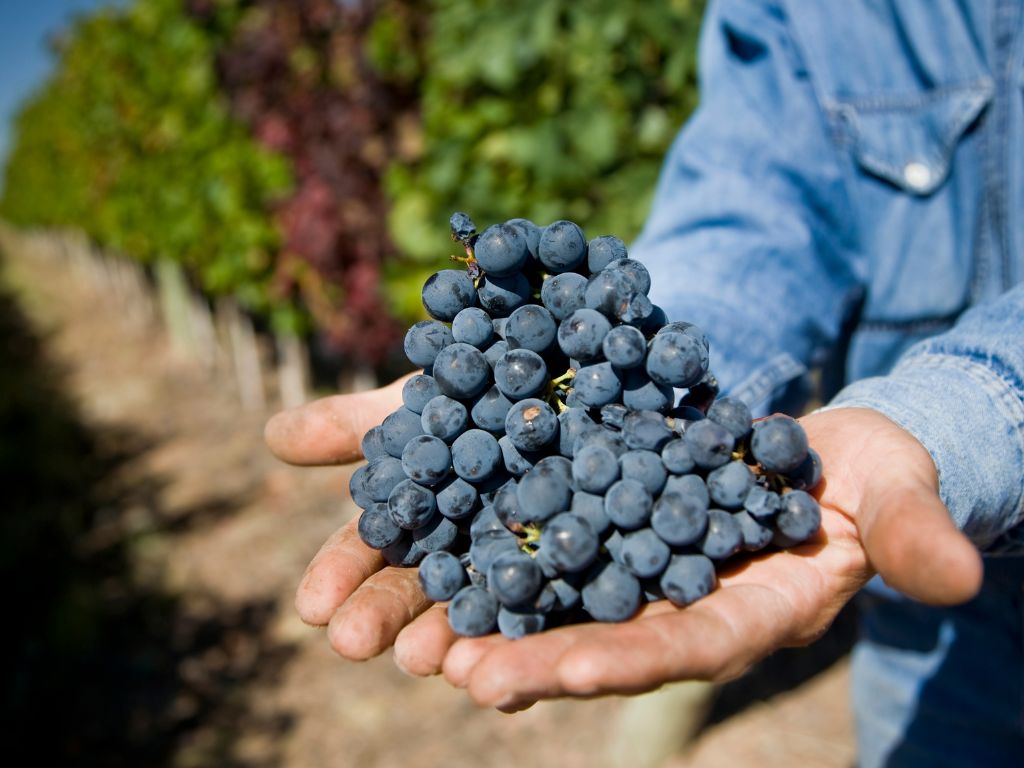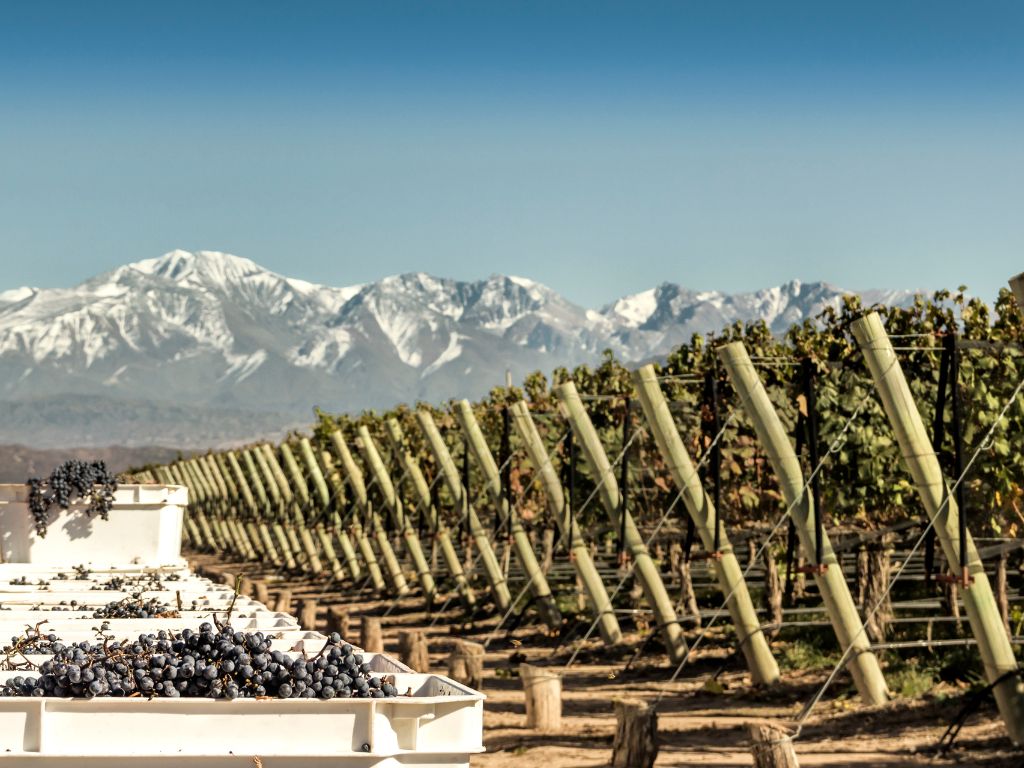
Are you a seasoned sommelier or perhaps a curious newcomer? Welcome, wine enthusiasts, to this exciting guide to Malbec wines.
Whether you’re exploring Malbec wine for the first time or you’re already familiar with the Malbec wine grape, grab your corkscrews and prepare your palates for a thrilling ride packed with bold flavors, velvety textures, and loads of information along the way.
This guide will show you things you probably didn’t already know about your favorite red wine. We’ll unravel the mysteries of Malbec, from its humble origins to its rise to stardom on the global wine stage. We’ll also discuss its taste, characteristics, food pairings, and more.
So, get ready to sip, swirl, and savor your way through the vineyards of France, Argentina, and beyond.
The Origins of Malbec Red Wine
Malbec Started in France
Malbec’s story begins in the vineyards of France, where it was once a key grape in Bordeaux blends, also known as “Cot.” It was especially important in the Cahors region of Southwest France. However, due to its sensitivity to diseases and climate, Malbec’s presence in Bordeaux has decreased over the years.
Today, Malbec is used in smaller amounts in Bordeaux blends to add body, fruity characteristics, and that signature deep Malbec color. Malbec grapes give the wine a plush texture, along with flavors of plum and black cherry. While its role in Bordeaux has lessened, it still contributes to the complexity and character of many wines from the region.

Flourished in Argentina
Malbec found its true home in the sun-drenched terroirs of Argentina, where Malbec wine continues to flourish in the high-altitude vineyards of the Uco Valley in Mendoza.
The unique combination of altitude, climate, and soil gives Argentine Malbec its distinctive character, marked by bold fruit flavors and smooth tannins. Malbec grapes in Argentina produce wines with a richer, more fruit-forward profile compared to their French counterparts.
You can easily find a wide range of styles here, from fruity and approachable to rich and complex. This is why Malbec wine from Argentina has gained such widespread popularity, often showcasing bright magenta rims and flavors of plum, blackberry, and black cherry.
Notable Mentions
- Sonoma County, California, USA: While it’s not as popular as Uco Valley in Mendoza, Argentina, or France, Sonoma County produces some noteworthy examples of Malbec wine. The warm days and cool nights of regions like Alexander Valley and Knights Valley allow for the development of ripe fruit flavors balanced by good acidity.
- Colchagua Valley, Chile: Chile’s Colchagua Valley is gaining recognition for its Malbec wines. The region’s diverse microclimates and soil types allow for various styles, from fresh and fruity to bold and structured.

What Does Malbec Wine Taste Like?
The Malbec flavor profile is known for being rich and velvety, with bold, fruit-forward notes that delight the palate. Expect ripe plum, juicy blackberry, and violet, along with a hint of smoky spice that lingers long after each sip. Malbec wines strike the perfect balance between elegance and intensity, with soft tannins and vibrant acidity, making them incredibly satisfying. Typically, Malbec is a dry wine, but its ripe fruit flavors can give it a luscious mouthfeel.
Visually, Malbec color is striking, often deep purple, bordering on inky black, with a bright magenta rim. On the nose, you’ll find a bouquet of dark fruits like plum, blackberry, and blueberry, alongside subtle hints of violet, spice, and earthy undertones. With oak aging, Malbec wines can develop complex layers of vanilla, cedar, and tobacco that complement their rich fruit-forward profiles.
When looking for a decent Malbec wine, focus on one that showcases these bold fruit flavors while maintaining a smooth, balanced structure. Whether you’re sipping a bottle from France or Argentina, the rich, velvety texture and complex flavors make Malbec an unforgettable wine experience.
What is the Ideal Malbec Food Pairing?
Malbec’s bold flavors and moderate tannins make it a perfect match for dark meat poultry and leaner red meats. For a classic pairing, try it with grilled meats such as steak, lamb, or barbecue ribs, where its robust flavors complement the savory richness of the meat. It also pairs beautifully with pork, pot roast, and blue cheese.
If you’re exploring Malbec wines from France, you’ll find that they pair especially well with food, thanks to their earthy and smoky undertones. Argentine Malbec wines, on the other hand, often complement rich, grilled meats with their fruitier profile.

Fun Facts
- Even though Malbec originated in France in the 1880s, Argentina is now the largest producer of Malbec wine worldwide, producing about 75% of the world’s supply.
- Malbec wines from France and Argentina taste different. French Malbecs tend to be earthier and more structured, while Argentine Malbecs are known for their bold, fruity flavors and smooth finishes. It’s a fun one to play with in a blind tasting!
- While most Malbec wines are dry, sweet versions of Malbec wine do exist and are equally delightful to explore.
- Malbec was introduced to Mendoza, Argentina, in 1868 and has since become the country’s signature grape variety.
How to Buy a Good Malbec
When choosing a good Malbec, start by considering what is Malbec—a bold, fruit-forward red wine known for its rich flavors of plum, blackberry, and spice.
The Malbec wine price can vary based on region and quality, but the cost of Malbec generally ranges from $10 to $50 per bottle, with higher-end options offering more complexity and oak aging.
Look for popular Malbec wines from well-known Malbec wine brands like Catena, Alamos, and Trapiche. These Malbec brands are trusted for consistently delivering quality at a reasonable price.
For those new to Malbec, Argentine options from Mendoza are often a great starting point, as they offer excellent value for the Malbec wine price. Exploring different regions and Malbec brands will help you find a wine that suits your taste and budget.
When is Malbec Day?
World Malbec Day is celebrated on April 17th every year, so make sure to raise a glass of Malbec wine to commemorate this special occasion! For more on wine holidays, check out our Annual Wine Holiday Calendar.
Frequently Asked Questions
- Is Malbec wine sweet?
Malbec wines usually fall into the category of dry red wines, but there are some sweeter versions available. Most Malbec wines are known for their bold and robust flavors with moderate tannins.
- What type of wine is Malbec?
Malbec wine is a type of red wine made from the Malbec grape variety, originally from France but now primarily associated with Argentina. It’s known for its deep purple color, rich fruity flavors, and smooth tannins.
- Should Malbec be chilled?
Malbec is best served slightly cooler than room temperature. A brief chill in the refrigerator for about 15-20 minutes before serving can help enhance its refreshing qualities.
Conclusion
Malbec wine has captured the hearts of wine enthusiasts worldwide. From its origins in France to its rise to prominence in Argentina, Malbec continues to delight with its rich flavors of plum, blackberry, and subtle hints of spice.
Whether you’re sipping a bottle of Malbec from Mendoza or Cahors, you’re sure to enjoy its bold character and versatility.
